
According to statistics, segmented and well-targeted email campaigns deliver a staggering 77% of email return on investment (ROI). Furthermore, 78% of marketers consider subscriber segmentation the most effective email marketing strategy.
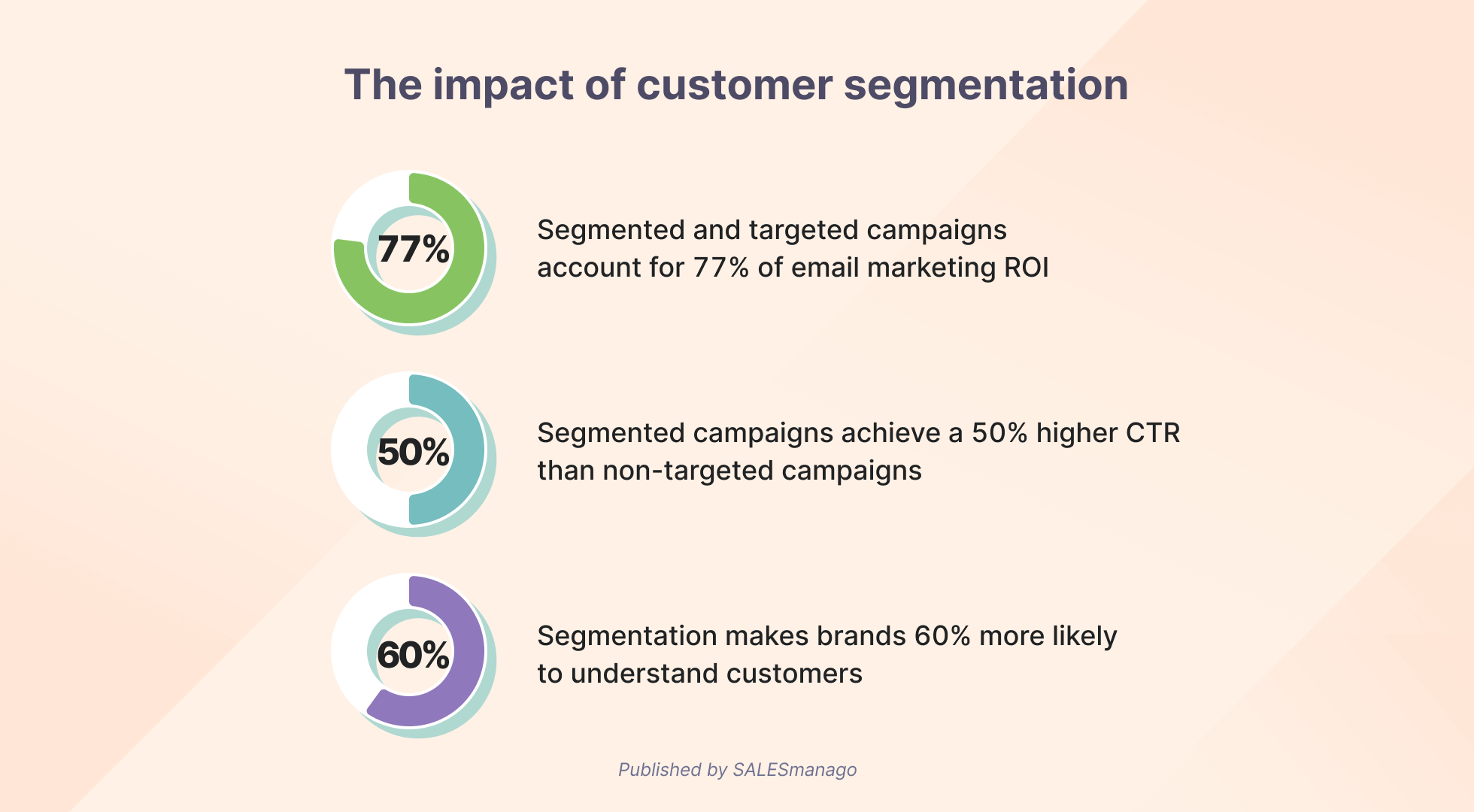
Customer segmentation has thus been instrumental in helping businesses gain a competitive edge. It has also been crucial in maximizing their market impact.
In this article, we’ll explore the concept of customer segmentation. You’ll learn about different customer segmentation models. You’ll also find steps to achieve well-defined customer segments and some tools to help you execute this process. Finally, we will show how businesses can use customer segments to their advantage.
Join us on this insightful journey to better understand customer segmentation.
What are customer segments?
Customer segments represent distinct groups within a company’s customer base. Specific characteristics differentiate each segment. These segments enable businesses to categorize their customers, clients, and leads. As a result, brands can apply more targeted communication and service approaches.
Customer segmentation requires an industry- and company-specific strategy. It should be tailored to the unique characteristics of the target consumers. Segmentation criteria vary depending on whether a company’s primary customers are other businesses (B2B) or individual consumers (B2C).
For B2B operations, businesses may segment customers based on factors like:
- Company size
- Geographical location
- Industry sector
- Workforce size
- Past purchasing behavior
Each parameter offers insights into the business’s needs, preferences, and potential future behavior.
In contrast, when dealing with B2C models, businesses may segment their customers using criteria such as:
- Age and gender
- Income level
- Purchasing habits
- Lifestyle choices
Segment your audience easily with Textmagic.
SMS, email, calls, WhatsApp, and Facebook, together.
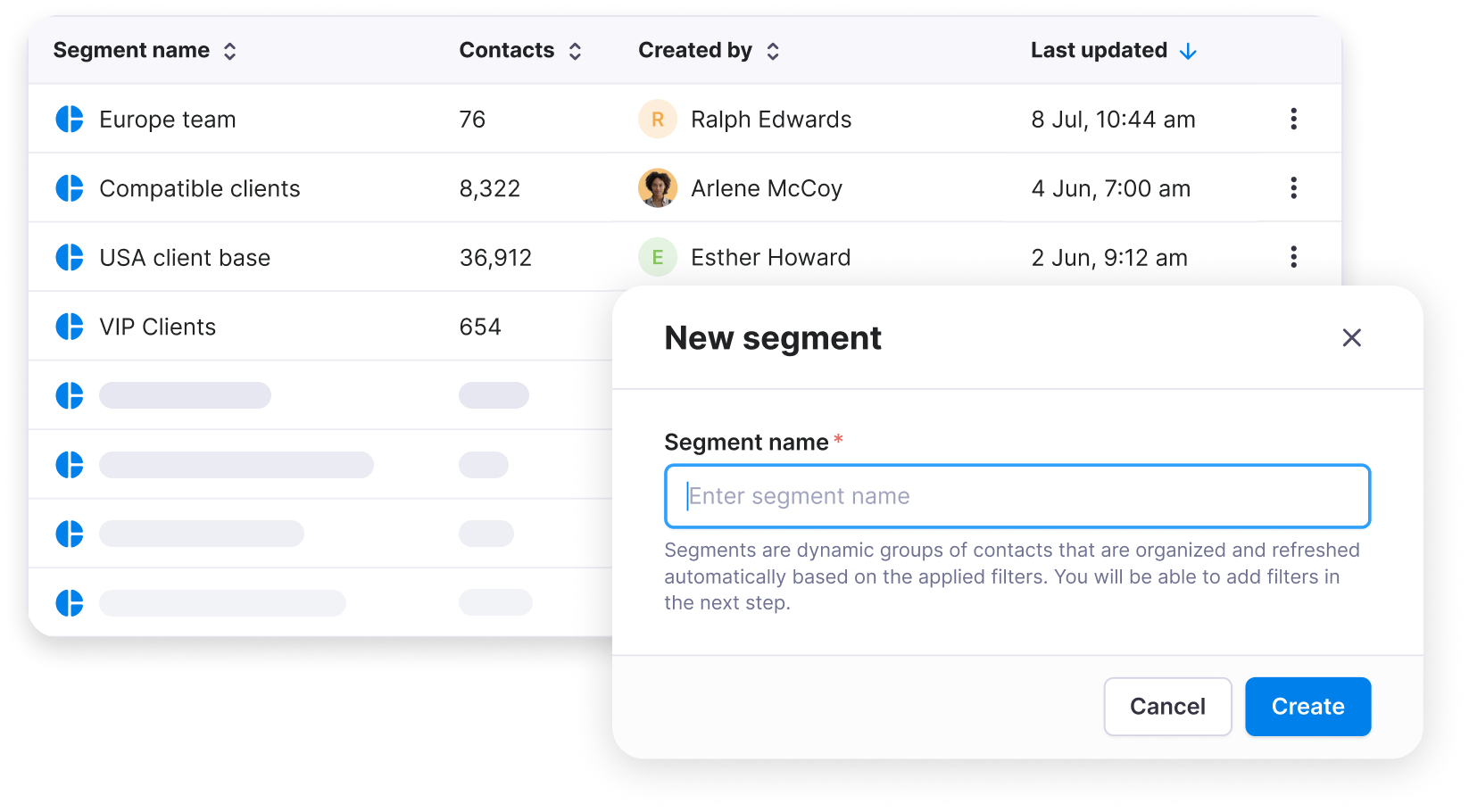
Customer segmentation vs. market segmentation
Customer and market segmentation concepts often overlap, leading to frequent interchange in usage. But, they serve distinct purposes within a business strategy. Customer segmentation is viewed as a subset of market segmentation. Each targets different scopes within the marketplace.
Market segmentation takes a broader approach. It analyzes the entire marketplace. It also identifies segments based on general characteristics. These include product type or consumer demographic. Let’s see an example in the clothing industry. In this case, market segments may be consumers interested in luxury clothing vs. budget-friendly attire.
Conversely, customer segmentation hones in on a company’s specific share of the market. Customer segments are based on distinct customer characteristics. Consider the same industry example. A luxury clothing retailer might segment its customer base into:
- Customers who prefer high-end designer labels
- Customers favoring premium in-house brands
Ultimately, the choice to use customer segmentation, market segmentation, or both depends on:
- The nature of a company’s products or services
- The specific objectives of the company
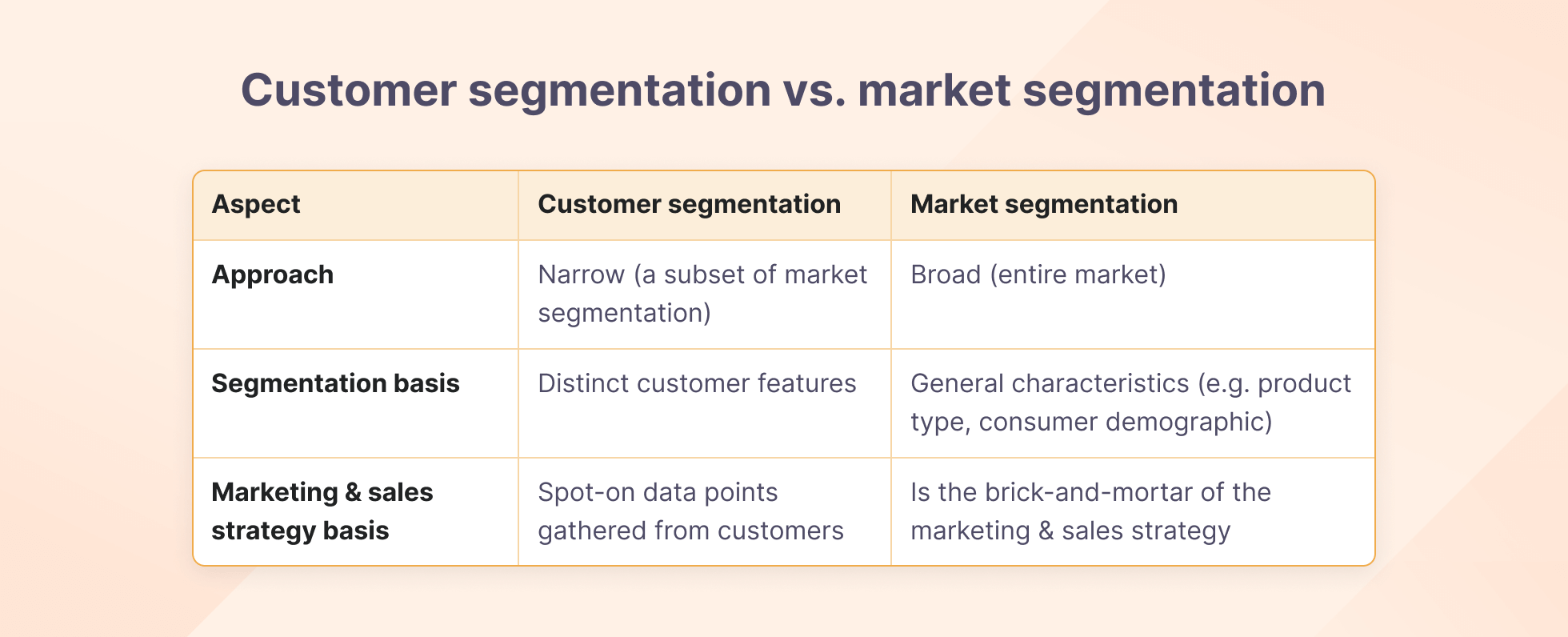
Why are customer segments important?
The significance of well-defined customer segments stems from several key benefits. They can transform how businesses interact with their clients.
Customer segments help build more detailed buyer personas
Delineating customer segments generates nuanced buyer personas. They act as virtual stand-ins for actual customer groups. These personas reflect customers’ distinct characteristics, behaviors, and needs.
Defining detailed buyer personas is the first step to creating an effective customer journey map. This makes it easier for businesses to cater to their individual customer needs and ensure seamless experiences.
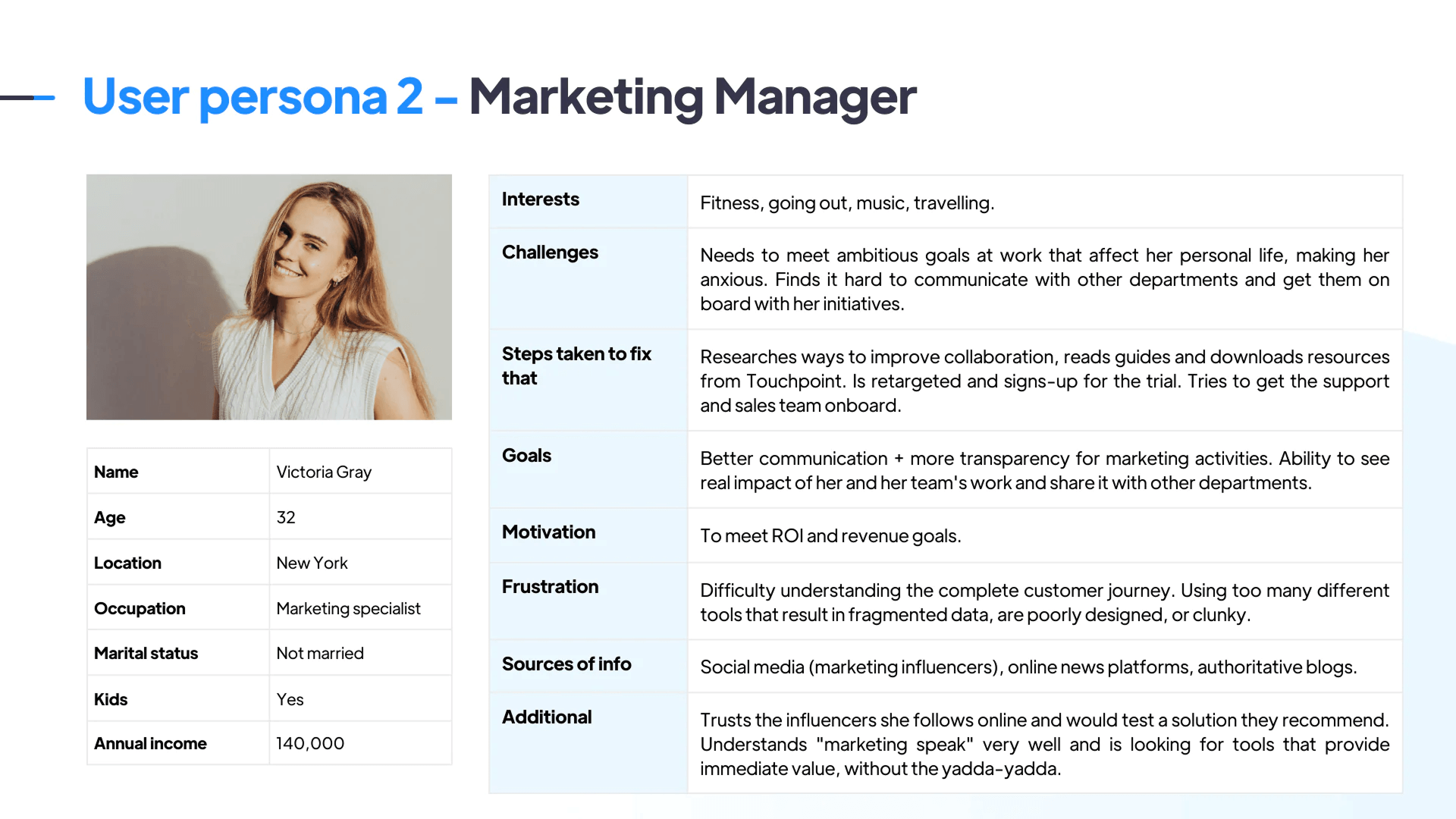
Segmentation allows tailoring marketing messages accurately
Businesses can better understand the nuances of each customer segment. As a result, they can tailor their marketing messages to resonate with each group specifically. Customized marketing communication, ranging from ad campaigns to email newsletters, results in:
- More effective marketing strategies
- Higher conversion rates
- Better return on investment
Segmenting fosters customer relationships and retention
Customer segmentation allows businesses to tailor experience across every customer touchpoint. This can lead to improved customer satisfaction and stronger relationships. Ultimately, it increases loyalty and customer retention rates.
Customer segments enhance products and experiences
Feedback from customer segments can provide valuable insights into their needs and preferences. Businesses can use this information to enhance their:
- Products
- Services
- Onboarding process
- Overall customer experience
📈 This is particularly relevant if you have adopted a product-led growth strategy. Proper customer segmentation is key to meeting the specific requirements of each segment. It empowers businesses to achieve the desired Aha! moment.
Implementing customer segmentation drives cost efficiency
Lastly, focusing on well-defined customer segments generates cost savings. Segmentation allows targeting marketing efforts towards high-value segments. It also makes it possible to craft products or services that better cater to their needs. In this way, businesses can optimize their resources and improve their bottom line.
Therefore, customer segmentation is not just an analytical tool. It’s a business growth catalyst that can:
- Foster customer loyalty
- Enable personalized marketing
- Drive efficiency
Let’s look at the different types of segmentation and the criteria they’re based on.
Customer segmentation models
There are certain segmentation models that empower businesses to tailor their offerings and communications. Let’s see what they are about.
Geographic segmentation
This model involves grouping customers based on their geographical location – city, state, country, or even town. Geographic segmentation allows brands to align with local dialects and practices. It’s particularly beneficial for businesses operating in:
- multiple locations
- shipping products across diverse regions
Demographic segmentation
The demographic segmentation model looks at life circumstances such as:
- Age
- Gender
- Income
- Education
- Marital status
🛍️ Segmenting customers by their demographics is an indispensable tool for industries like e-commerce or fashion.
Behavioral segmentation
This model categorizes customers based on their interaction with a brand. It tracks customer behaviors such as product use and frequent actions. Behavioral segmentation can be particularly effective in advertising. It helps optimize ad spend by focusing on relevant customer segments.
Psychographic segmentation
This strategy concerns an individual’s personality traits, attitudes, values, and interests. It enables marketers to provide customers with specific content relevant to their interests. It is particularly useful for businesses offering a variety of services.
Segmentation based on customer needs
This model is centered around the specific product or service requirements. It caters to different customer groups. Needs-based segmentation enhances customer satisfaction and retention. It helps businesses align their offerings with customers’ unique needs.
Technographic segmentation
With technological segmentation, the criterion for grouping customers is their usage of specific technologies:
- Mobile or desktop devices
- Apps
- Software
This model provides insights into customer priorities regarding tools and communication media. It helps tailor organizations’ marketing content and offerings.
💻 Technographic segmentation is especially valuable for technology-focused companies, such as SaaS.
Segmentation by customer value
This model segments customers based on their economic value to the business. This helps companies differentiate their marketing efforts for high-value and low-value customer groups. Value-based segmentation is best for businesses offering products/services at various price points.
Let’s summarize the characteristics of the different segmentation models in a table.
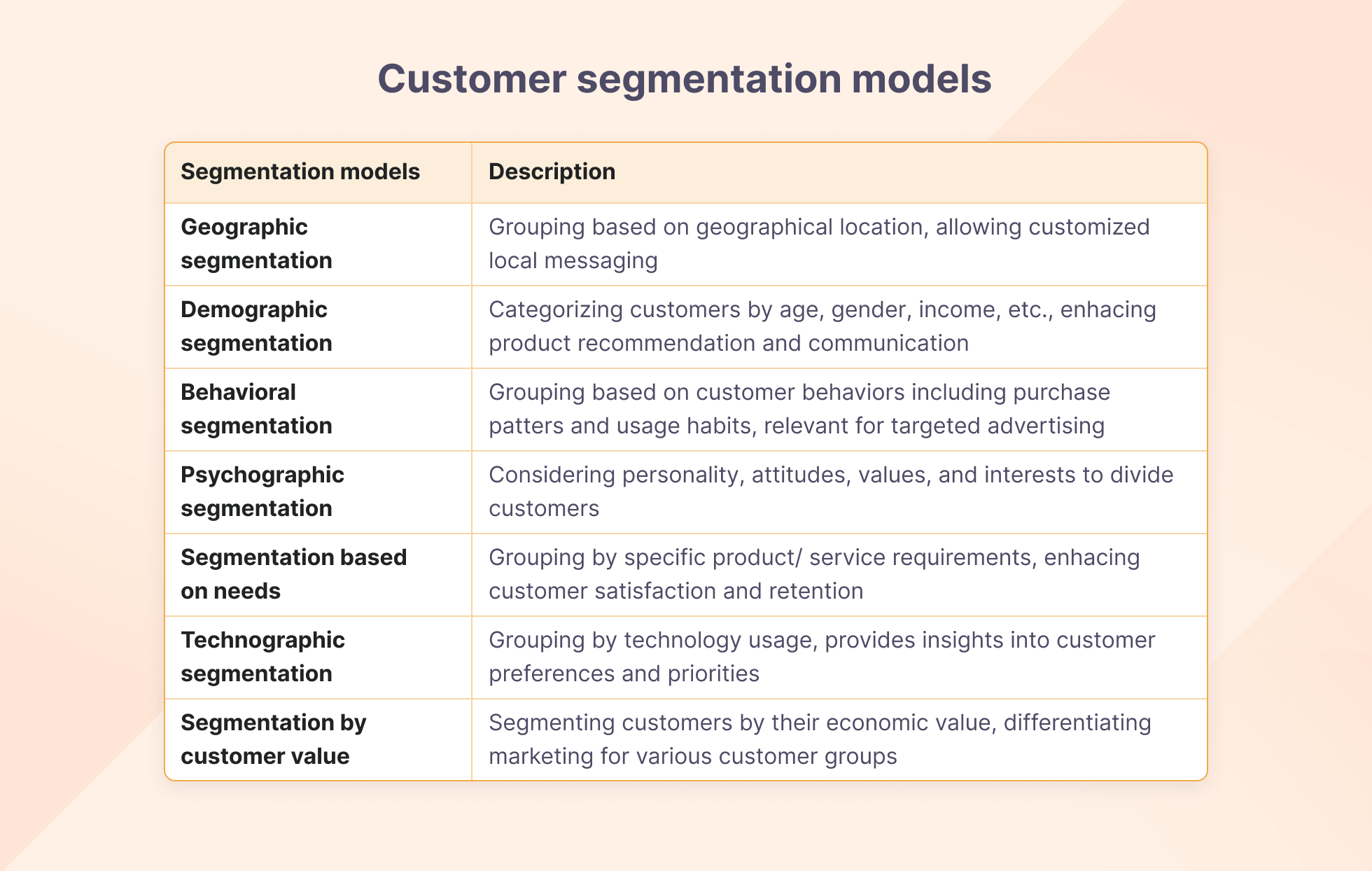
How to achieve well-defined customer segments
Creating distinct and valuable customer segments is a critical element of:
- Modern marketing
- Customer service
- Sales strategy
Customer segmentation forms the foundation for personalized customer interaction. That is why it should be executed in well-structured steps.
1. Define the objectives and criteria for segmentation
This step is the foundation of your segmentation process. You need to specify the objectives for your segmentation. Are you launching a new product or aiming to expand to new markets? Your goals influence the types of segmentation required.
For instance, if you’re introducing a new product/feature, consider these segmentation approaches:
- Psychographic segmentation
- Needs-based segmentation
- Technographic segmentation
A clear understanding of your segmentation objectives helps you in two ways:
- Focus your data collection process on the most critical areas
- Enhance your marketing strategies
2. Organize segmentation projects
With clear objectives in place, you can develop a strategy and process tailored to each segmentation type. A SMART framework can help determine important aspects, such as:
- Project objectives
- Demand for the segment
- Time frame for project completion
- Metrics to evaluate success
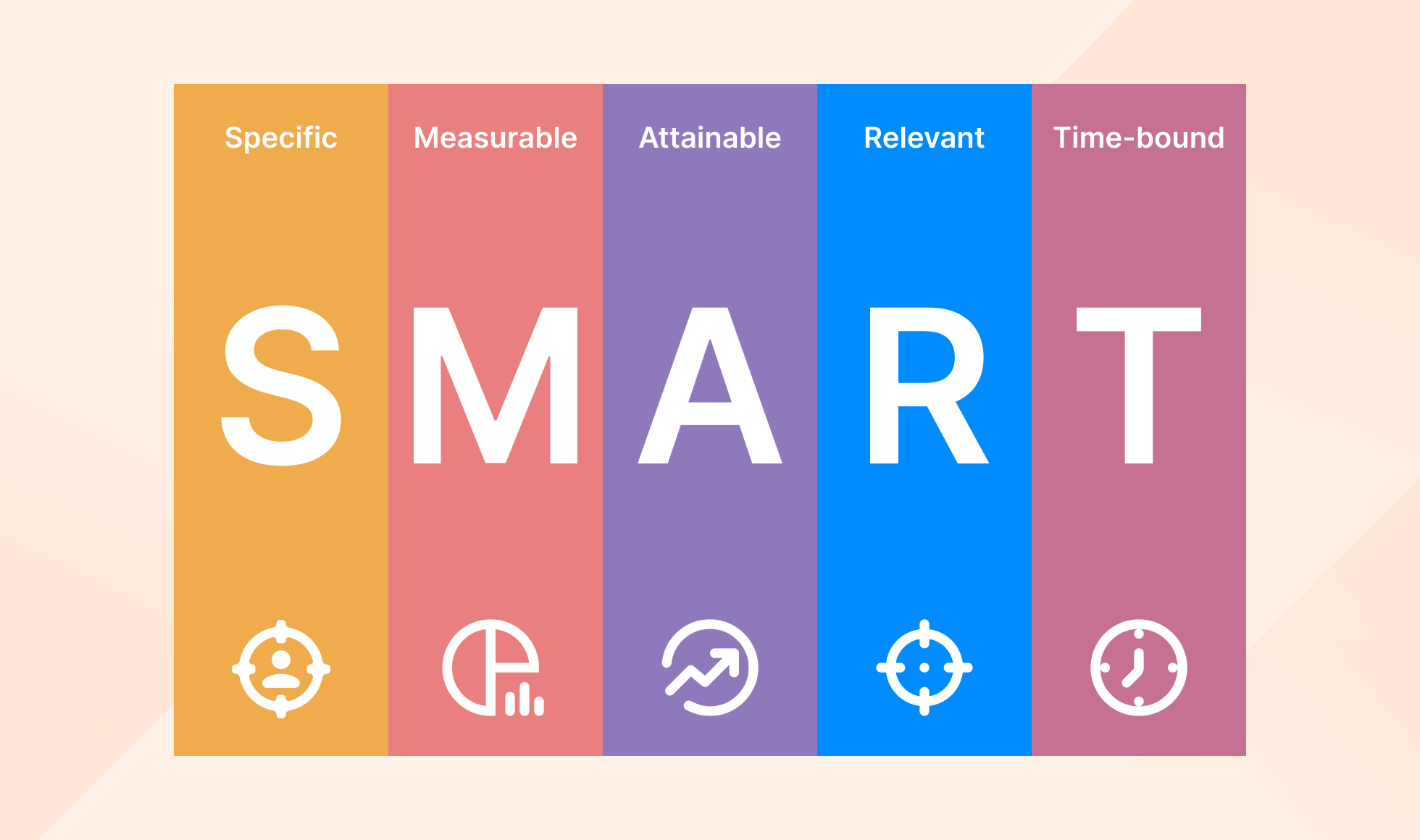
This step also includes defining the scope of each project and identifying data sources. You also have to set parameters like budgeting and resource allocation.
👩💼👨💼It’s essential to involve key stakeholders from various departments. Their functions might be directly affected by the segmentation process.
3. Collect customer data
The next critical step involves systematically collecting customer data. This task can be accomplished using direct methods, like customer surveys. They can offer invaluable insights into customer behaviors, preferences, and satisfaction levels.
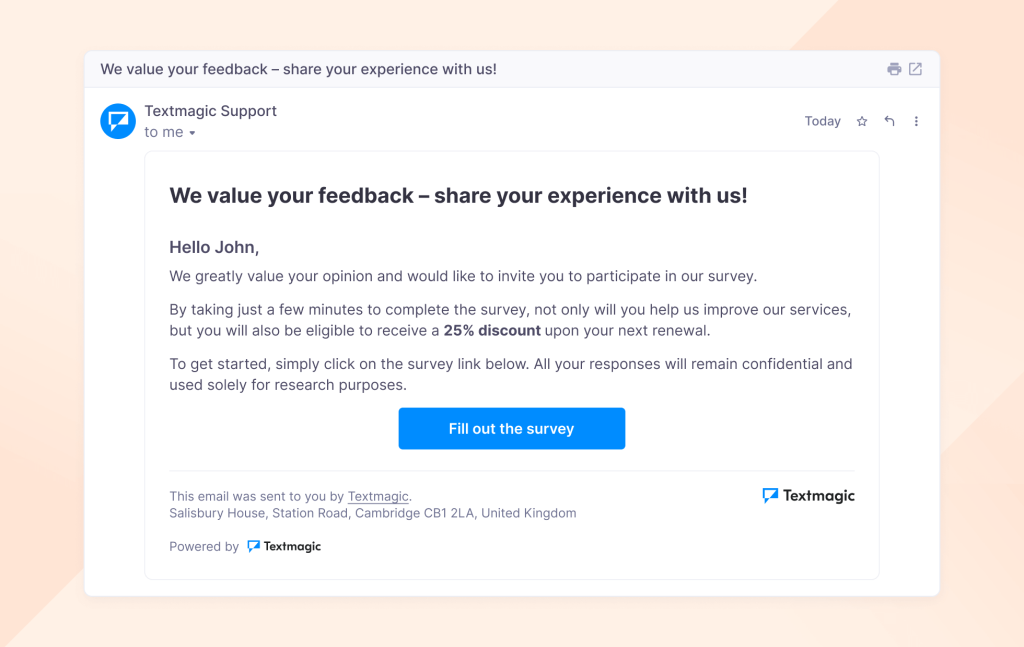
It can also be achieved indirectly by employing analytics tools or social listening. Analytics tools establish broad patterns of customer interactions across different platforms. Social listening on platforms like Twitter or Instagram can give you a sense of customer sentiment toward your brand and help detect emerging trends.
4. Classify customers into categories
Upon obtaining a robust customer data set, you need to sort this information into meaningful categories or segments. This step could greatly benefit from machine learning algorithms. They can automate and refine the segmentation process.
It’s essential to ensure these segments are accessible and understandable by your team members.
🤝 When identifying customer segments, don’t forget your loyal and existing clients. Including them in the segmentation can further strengthen your relationships.
5. Create segment-specific marketing strategies
With clearly defined segments, you can develop marketing strategies tailored to each customer group. This involves identifying the type of content, products, or features that resonate most with each segment. It also includes crafting communication plans that best engage these customers.
A granular understanding of your segments leads to personalized marketing efforts.
6. Regularly review and update your segments
Customer behavior and preferences are dynamic. Therefore, it’s essential to conduct regular reviews of your customer segmentation model. This process involves:
- Verifying the accuracy of your segments
- Comparing their performance against initial goals
- Obtaining feedback from both your team and your customers
You should make the necessary adjustments based on this analysis.
In the next section, we will explore various tools that can streamline the customer segmentation process.
Five examples of customer segmentation tools
Customer segmentation tools are crucial in gathering, organizing, and analyzing data. Some of the solutions, such as Google Analytics, collect customer browsing data. They provide insights into:
- Online behaviors
- Preferences
- Purchases
- Locations
- Devices used by consumers
Other solutions, such as Mailchimp, automate the segmentation process. They let users easily build customer lists based on various criteria. Such tools free up time for businesses. It allows them to focus on growth-centric activities.
Here are four relevant tools you’ll want to consider.
1. Textmagic
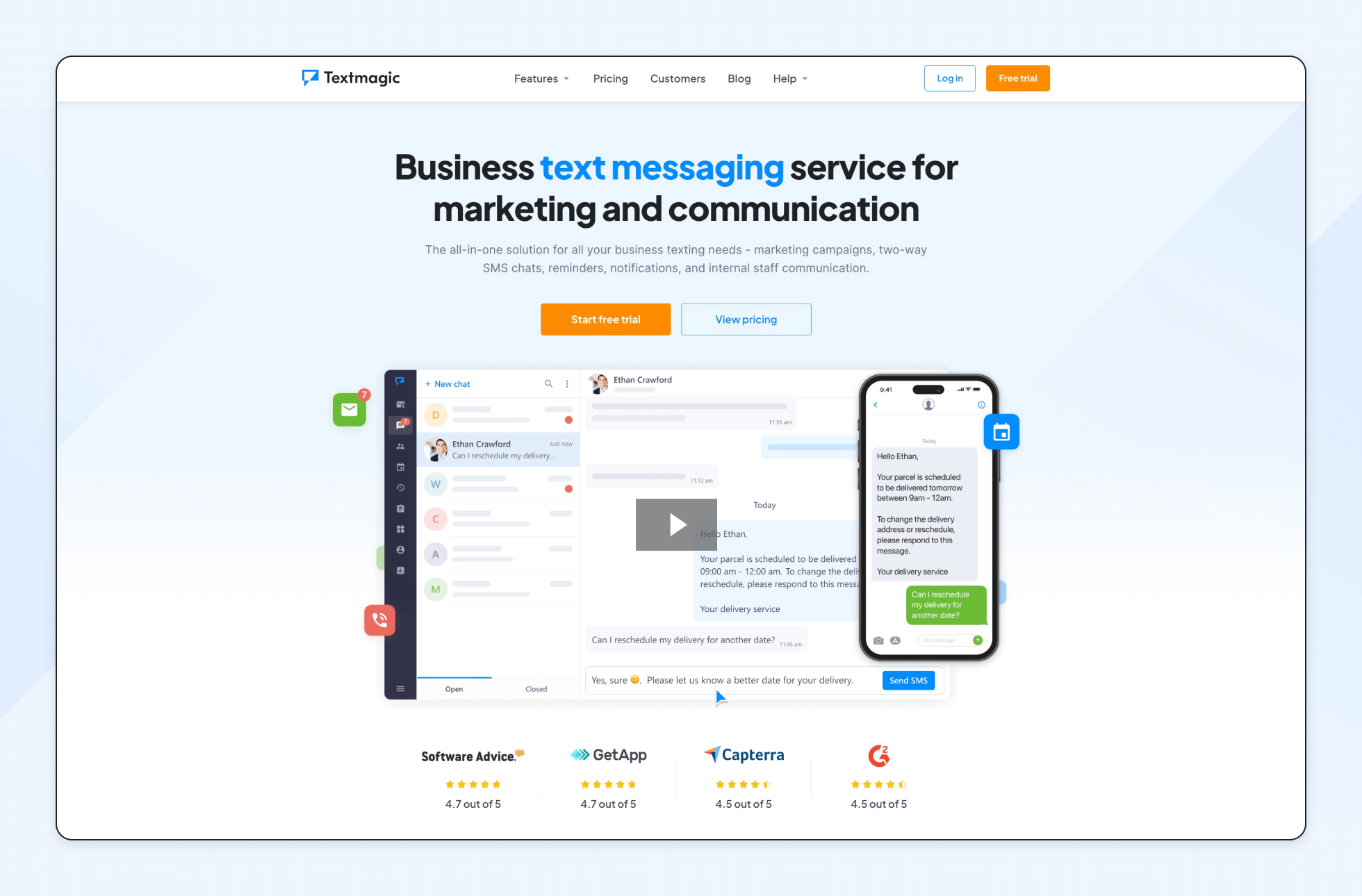
Textmagic is a user-friendly business communication platform that helps small and medium businesses easily engage customers, staff, and partners across multiple channels. Connect your favorite channels in a few clicks, segment contacts automatically, and send critical communications from one dashboard.
2. HubSpot
HubSpot is a CRM platform offering intuitive segmentation and list-building capabilities. This tool streamlines contact management, enabling teams to close deals more quickly.
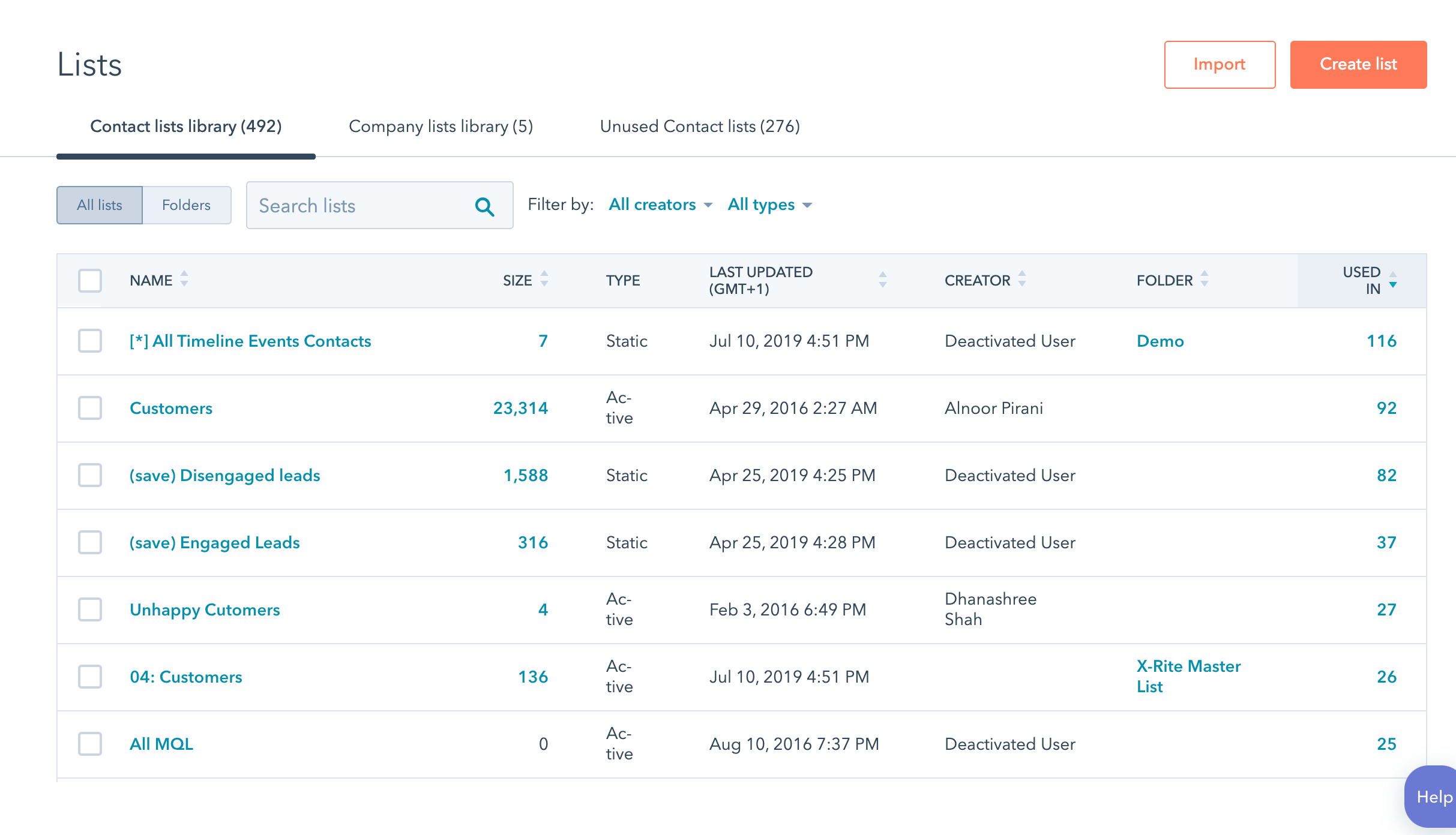
Image source: hubspot.com
HubSpot allows users to customize their sales pipelines. This customization enables efficient tracking and targeting of clients. By facilitating better management and tracking of client initiatives, businesses can concentrate on high-yielding activities.
Albert Kim, VP of talent at Checkr, described his use cases of HubSpot:
“HubSpot’s automated workflows have been essential in tailoring our outreach. By segmenting our clients depending on their actions — such as downloading a compliance guide or visiting a specific page -— we can deliver tailored follow-ups that feel highly relevant. Businesses that use our fair chance hiring resources, for example, will receive automated updates on related initiatives, regulations, and case studies. This targeted approach raised client engagement by 35% in the first quarter alone, converting more than 20% of these leads into ongoing partnerships.
The platform’s analytics give us real-time insights that directly inform our content strategy. We recently discovered that resources on hiring efficiency were receiving excellent engagement, however our general hiring materials were underperforming. We instantly doubled down on efficiency content, resulting in a 42% increase in related page views and a spike in downloads. These data have enabled us to fine-tune our strategy in real time, directing resources to the content that resonates the most with our audience.”
3. Sprout Social
Sprout Social enhances message distribution on platforms like Facebook and LinkedIn. It does so through its audience targeting feature and social listening tools.

Image source: media.sproutsocial.com
Sprout Social empowers businesses to target customers on Facebook based on various parameters. These parameters include interests, gender, age, location, relationship status, and education.
LinkedIn segmentation targets customers by business size, industry, location, and seniority. This allows businesses to reach their preferred customer segments on these platforms accurately. It also helps businesses optimize their social media marketing strategy.
4. Mailchimp
Mailchimp is a robust email marketing tool integrating customer segmentation capabilities. It enables businesses to manage segmented email marketing campaigns effectively. Thereby the solution facilitates the dissemination of customized messages to different customer groups.
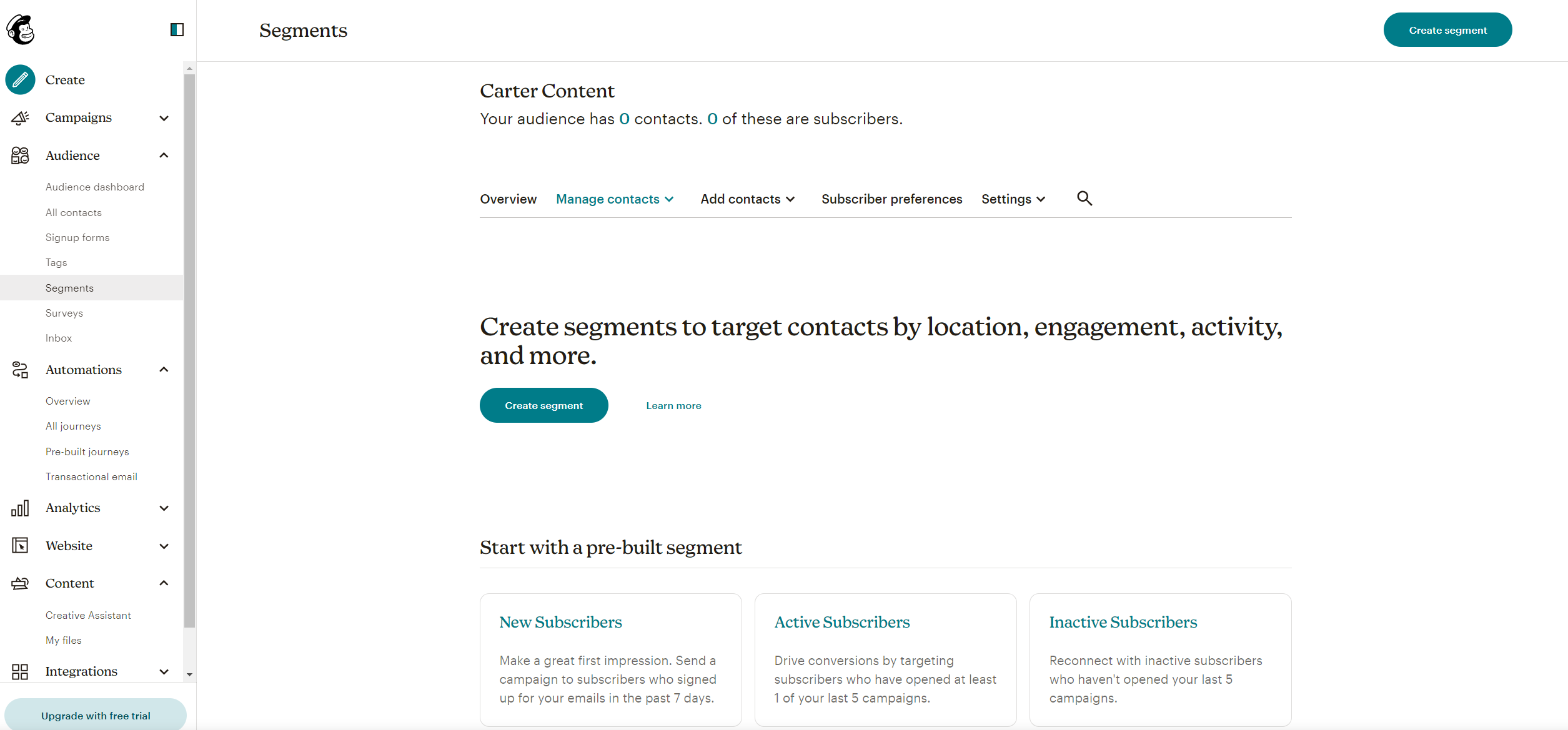
Image source: mailchimp.com
Mailchimp has filtering capabilities. Using one to five criteria, it ensures communication reaches the intended target groups. This personalized approach to each customer segment enhances the effectiveness of the campaigns.
5. Qualtrics
Qualtrics incorporates machine learning and AI capabilities to facilitate efficient customer segmentation. The platform not only groups customers into segments but also provides comprehensive product segmentation features, allowing businesses to tailor their offerings to specific customer segments.
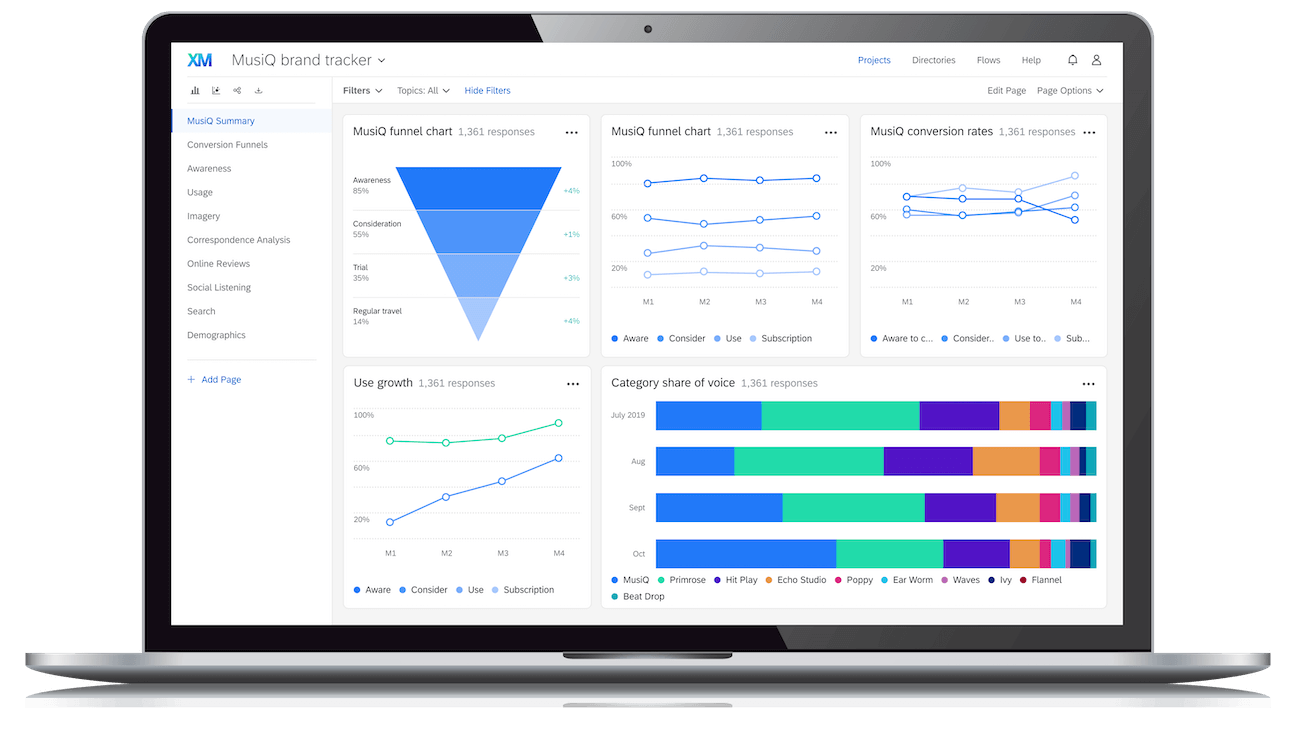
Image source: qualtrics.com
Additionally, Qualtrics enables users to study segments. This way, they can determine the best communication approaches for each segment. This makes it a powerful tool to leverage data-driven insights for effective segmentation.
How to effectively utilize customer segments
Customer segment data can be used to improve the effectiveness of various aspects of your business operations. Let’s highlight some of them now.
Improve products and services with segmentation data
The information acquired from customer segmentation can be instrumental in enhancing your offerings. It can include valuable feedback from various customer groups. These insights can shed light on frequent issues and challenges associated with your product or service.
As a result, you can develop and adjust your products to meet customer expectations more accurately. For instance, this could involve simplifying the checkout process. You might even identify a new feature to add. So, you’ll be able to provide a more seamless user experience for a specific segment.
💡 Making informed decisions based on customer segment data can help businesses prioritize specific product or service features for some segments while implementing different onboarding flows for others.
Leverage segment data for informed marketing strategies
Customer segments can also be integral in shaping your marketing efforts. You can understand which channels resonate with different segments. This can guide your marketing strategy toward greater effectiveness and efficiency.
For instance, if a segment is heavily engaged on social media, a robust social media strategy might be best suited for that group. Conversely, a segment may engage more with email marketing. In this case, you should invest in creating compelling email content.
🔗 Strategies tailored to segment preferences can foster deeper connections and improve marketing outcomes.
Enhance customer support with segment data
Segment data is invaluable for refining customer support. Different segments may have varied preferences about communication channels, or require specialized support based on their unique challenges.
For example, the organization can provide faster support to certain segments or escalate tickets directly to a key account manager for others. This knowledge can help streamline your support processes and improve customer experience. Additionally, equipping your team with tailored email scripts ensures they can communicate effectively and consistently with every customer segment.
🚀 Dedicated tools and training can help your support tackle the challenges faced by each segment.
Segment your audience easily with Textmagic.
SMS, email, calls, WhatsApp, and Facebook, together.

Serve your customer segments better
Effective customer segmentation is not just about categorizing customers. It’s also about using the knowledge gained to better serve them.
Do you want to stand out and thrive in the overcrowded business landscape? Then, provide outstanding services to all customer segments and use segment data effectively to improve product offerings.
Frequently Asked Questions (FAQs)
Determining the best segmentation approach starts with understanding your business objectives, customer base, and the type of data you can collect.
For example, value-based segmentation can help prioritize high-revenue customers, while geographic segmentation is ideal for location-specific offers.
K-means clustering is a popular choice for customer segmentation because it’s fast and works well with large datasets.
However, if you’re looking for more flexibility in detecting irregular groupings, algorithms like DBSCAN or Gaussian Mixture Models might be better suited.
Successful targeting of a new customer segment requires aligning your messaging, product positioning, and channels with what matters most to that group.
This could involve developing new content, offers, or even product features that address what this segment cares about most.
SMS is one of the best channels for targeting a new customer segment. With a business texting platform like Textmagic, you can use the contact management feature to group and tag contacts by shared traits, making it easy to launch campaigns tailored to each segment.
The B2B customer segmentation model divides your client base according to factors like industry, company size, buying behavior, and location.
It allows you to tailor your marketing, sales, and service strategies to different types of business clients.
Related articles
RCS vs. SMS: Advantages and differences
Over the years, modern communication has seen signif...
The 12 best sales software for small businesses and tips for success
Discover the best sales software for small businesse...
What is the digital customer experience? The ultimate guide
Discover the key strategies to enhance your digital ...
Email & SMS spam words to avoid when marketing your business
Businesses all over the world lose approximately $20...
Conversational messaging: Transform customer engagement with SMS
Nowadays, businesses are adapting their communicatio...




